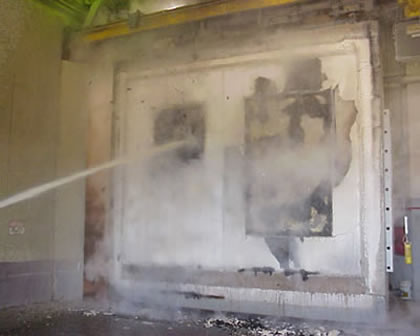History of the Hose Stream Test

Hose Stream Test Article
History of the Hose Stream Test. Invented over 100 years ago, the hose stream test was developed to test cast and wrought iron in the event of a fire. It was not initially developed to test fire rated glass.
History of the Hose Stream Test
Hose Stream Test Explained In the late 1890’s, cast and wrought iron were commonly used in construction. Unlike steel, they failed in a brittle manner when heated in a fire, creating a risk for firefighters. As a result, the hose stream was created to test the integrity of these support members. In 1918, the first edition of ASTM standard E199 – known then as ASTM C19-1917T, Standard Test Methods for Fire Tests of Building Construction and Materials included a hose stream test to measure a material’s integrity.
 |
The hose stream serves as an indicator for two important attributes: 1) the integrity of an assembly during fire exposure, and 2) the overall reliability of the material to perform it’s intended function.
It is important to note the test is not in any way intended to replicate or determine the affects of firefighting tactics on systems. While the hose stream apparatus is adapted from fire fighting equipment, it’s intent is to provide an impact, erosion and cooling exposure applied in a standard manner to the tested specimen. The hose stream test effectively screens out systems performing acceptably in the furnace environment but have insufficient integrity to withstand real-world fire exposure.
– From the files of Chad Stroike, fire protection engineering manager, Hiliti Inc.